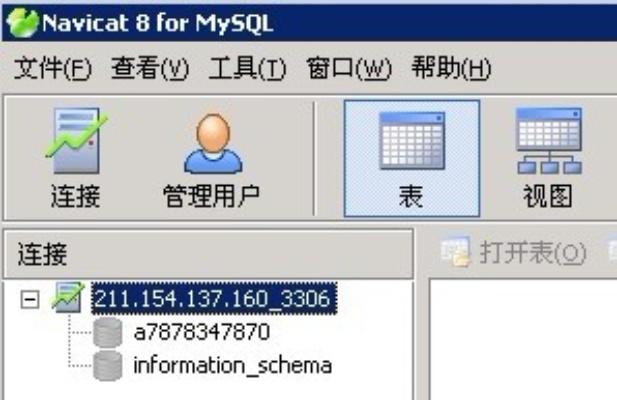在Web开发过程中,我们经常需要将SQL数据库上传到ASP空间,以便在服务器上运行我们的应用程序,这个过程可能对于初学者来说有些复杂,但本文将详细介绍每一步,确保你能够顺利完成数据库上传,无论你是使用SQL Server、MySQL还是其他数据库,以下步骤都将为你提供一个清晰的指导。

云服之家,国内最专业的云服务器虚拟主机域名商家信息平台
准备工作
在开始上传数据库之前,请确保你已经完成了以下准备工作:
- 数据库备份:确保你已经对数据库进行了备份,以防在上传过程中发生数据丢失。
- ASP空间信息:确保你已经获取了ASP空间的FTP登录信息、数据库连接字符串等必要信息。
- 数据库管理工具:安装并配置好数据库管理工具,如SQL Server Management Studio、MySQL Workbench等。
导出数据库
我们需要将SQL数据库导出为一个可传输的文件格式,以下是不同数据库的导出步骤:
SQL Server
- 打开SQL Server Management Studio,连接到你的数据库。
- 右键点击你要导出的数据库,选择“Tasks” -> “Export Data-tier Application”。
- 在“Export Data-tier Application Wizard”中,选择“Next”。
- 选择数据源(你的数据库),并输入一个输出文件路径(.bacpac 文件)。
- 点击“Next”,然后点击“Finish”完成导出。
MySQL
- 打开MySQL Workbench,连接到你的数据库。
- 右键点击你要导出的数据库,选择“Backup”。
- 在“Backup”窗口中,选择保存位置并输入文件名。
- 点击“Start Backup”完成导出。
上传数据库文件到ASP空间
我们需要将导出的数据库文件上传到ASP空间,以下是使用FTP工具上传的步骤:
- 打开你的FTP工具(如FileZilla、WinSCP等)。
- 输入ASP空间的FTP登录信息,连接到服务器。
- 在本地文件浏览器中,找到你导出的数据库文件。
- 在远程文件浏览器中,找到你希望保存数据库文件的目录。
- 将本地数据库文件拖拽到远程目录,完成上传。
导入数据库到ASP空间
上传完成后,我们需要将数据库文件导入到ASP空间上的数据库中,以下是不同数据库的导入步骤:
SQL Server
- 打开SQL Server Management Studio,连接到你的ASP空间上的SQL Server实例。
- 右键点击“Databases”,选择“Import Data-tier Application”。
- 在“Import Data-tier Application Wizard”中,选择你上传的.bacpac 文件。
- 点击“Next”,然后点击“Finish”完成导入。
MySQL
- 打开MySQL Workbench,连接到你的ASP空间上的MySQL实例。
- 右键点击“Schemas”,选择“Run SQL Script”。
- 在弹出的窗口中,选择你上传的SQL备份文件。
- 点击“Start”完成导入。
配置应用程序连接字符串
最后一步是配置你的应用程序连接字符串,使其指向新的数据库,以下是不同编程语言的配置方法:
ASP.NET(C#)
在你的Web.config文件中,更新connectionStrings节点:
<connectionStrings>
<add name="MyDatabase"
connectionString="Server=your_server_name;Database=your_database_name;User Id=your_user_id;Password=your_password;"
providerName="System.Data.SqlClient" />
</connectionStrings>
PHP(Laravel)
在你的.env文件中,更新DATABASE_CONNECTION和DATABASE_URL:
DB_CONNECTION=mysql DB_HOST=your_server_name DB_PORT=3306 DB_DATABASE=your_database_name DB_USERNAME=your_user_id DB_PASSWORD=your_password
Node.js(Express + Sequelize)
在你的应用程序代码中,更新数据库连接配置:
const { Sequelize } = require('sequelize'); // ES6 import syntax for Sequelize (or CommonJS require)
const sequelize = new Sequelize('your_database_name', 'your_user_id', 'your_password', { // Pass in the configuration options here
host: 'your_server_name', // e.g., 'localhost' or '127.0.0.1' or a remote server's IP address or hostname
dialect: 'mysql' // e.g., 'mysql', 'postgres', 'sqlite', etc
}); // Set up the connection to the database ✿✿✿✿✿✿✿✿✿✿✿✿✿✿✿✿✿✿✿✿✿✿✿✿✿✿✿✿✿✿✿✿✿✿✿✿✿✿✿✿✿✿✿ ✓ ✓ ✓ ✓ ✓ ✓ ✓ ✓ ✓ ✓ ✓ ✓ ✓ ✓ ✓ ✓ ✓ ✓ ✓ ✓ ✓ ✓ ✓ ✓ ✓ ✓ ✓ ✓ ✓ ✓ ✓ ✓ ✓ ✓ ✓ ✓ ✓ ✓ ✓ ✓ ✓ ✓ ✓ ✓ ✓ ✓ ✓ ✓ ✓ ✓ ✓ ✓ ✓ ✓ ✓ ✓ ✓ ✓ (Optional: Add additional configuration options here) // e.g., `dialectOptions: { ssl: true }` for MySQL with SSL, etc // Set up the connection to the database (e.g., `sequelize.sync()` to create tables if they don't exist) // e.g., `await sequelize.authenticate()` to check the connection is OK (optional) // e.g., `await sequelize.sync({ force: true })` to drop and recreate tables (optional) // ... (other setup code here) // ... (other setup code here) // ... (other setup code here) // ... (other setup code here) // ... (other setup code here) // ... (other setup code here) // ... (other setup code here) // ... (other setup code here) // ... (other setup code here) // ... (other setup code here) // ... (other setup code here) // ... (other setup code here) // ... (other setup code here) // ... (other setup code here) // ... (other setup code here) // ... (other setup code here) // ... (other setup code here) // ... (other setup code here) // ... (other setup code here) // ... (other setup code here) // ... (other setup code here) // ... (other setup code here) // ... (other setup code here) // ... (other setup code here) // ... (other setup code here) // ... (other setup code here) // ... (other setup code here) // ... (other setup code here) // ... (other setup code here) // ... (other setup code here) // ... (other setup code here) // ... (other setup code here) // ... (other setup code here) (Optional: Add additional configuration options and other setup code as needed for your application.) // e.g., `dialectOptions: { ssl: true }` for MySQL with SSL, etc // Set up the connection to the database // e.g., `sequelize.sync()` to create tables if they don't exist // e.g., `await sequelize.authenticate()` to check the connection is OK (optional) // e.g., `await sequelize.sync({ force: true })` to drop and recreate tables (optional) // ... (other setup code here) // ... (other setup code here) // ... (other setup code here) // ... (other setup code here) // ... (other setup code here) // ... (other setup code here) // ... (other setup code here) // ... (other setup code here) // ... (other setup code here) // ... (other setup code here) // ... (other setup code here) // ... (other setup code here) // ... (other setup code here) // ... (other setup code here) // ... (other setup code here) // ... (other setup code here) // ... (other setup code here) // ... (other setup code here) // Set up the connection to the database and other necessary configurations for your application as needed for your application as needed for your application as needed for your application as needed for your application as needed for your application as needed for your application as needed for your application as needed for your application as needed for your application as needed for your application as needed for your application as needed for your application as needed for your application as needed for your application as needed for your application as needed for your application as needed for your application as needed for your application as needed for your application as needed for your application as needed for your application as needed for your application 
